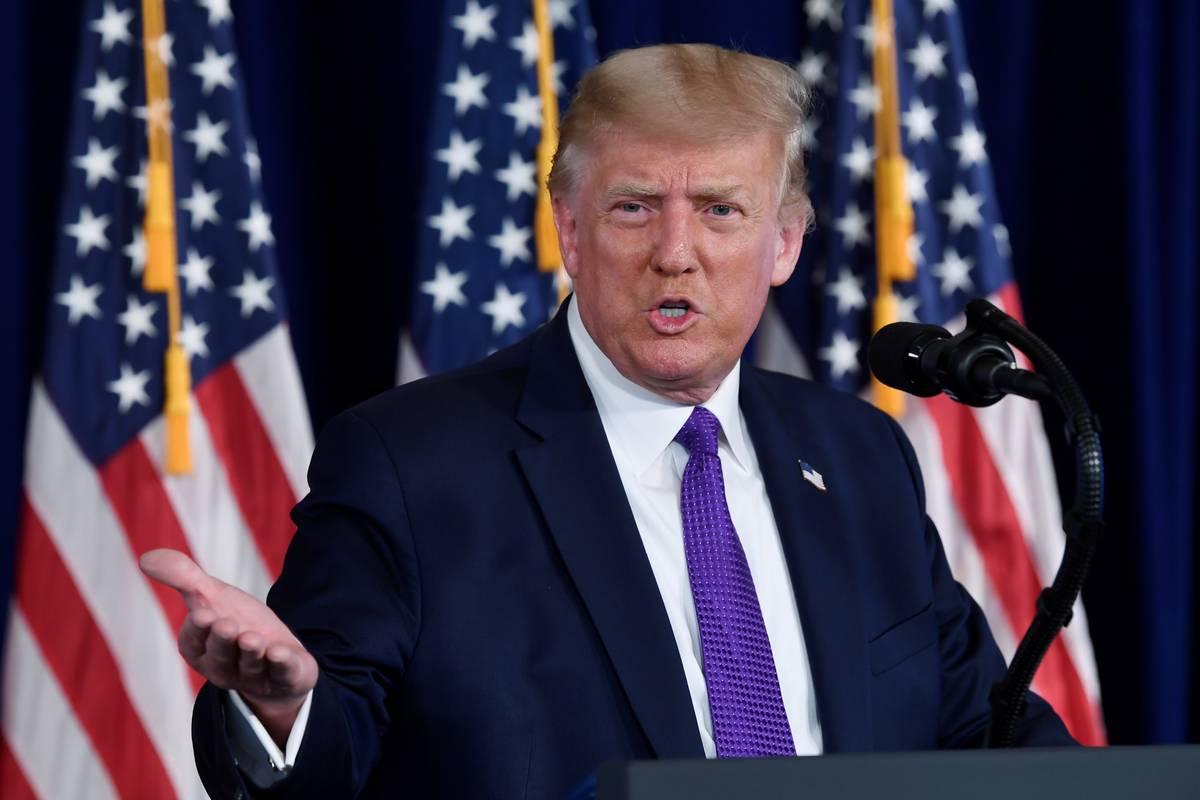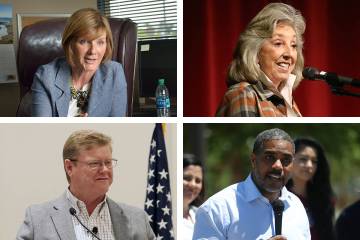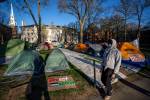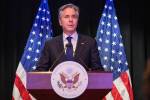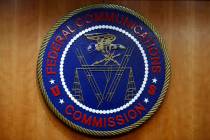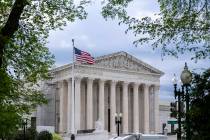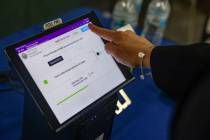GOP balks at coronavirus aid to ‘badly run’ states
WASHINGTON — As House Democrats are pushing their latest $3.4 trillion aid package — which includes more than $1 trillion for state and local governments — President Donald Trump and top Republicans have a message to the nation’s governors and mayors: Don’t look to Washington for another bailout, especially if you need one because you’ve done a poor job running your government.
Saturday during a news conference at the Trump National Golf Club in New Jersey, Trump accused Democrats of wanting to give “$1 trillion to bail out badly run, Democrat-run states.” Republican leaders and think tanks have waged a campaign to limit aid to state and local governments in the next COVID-19 relief package, if there is one.
Trump has rattled off the names of states with questionable claims on U.S. tax money. “So New York has a problem. California has a problem. Illinois had a tremendous problem, and others.”
Rep. Dina Titus, D-Nev., sees the Republican approach as bad for Nevada, which has suffered severe economic losses during the pandemic.
“Earlier this week, the state stopped accepting applications for rental assistance because we don’t have enough resources to meet the demand,” she responded in an email to the Review-Journal. “We need more of this funding in Nevada to save the jobs of essential workers, contain the virus, and make a long-term economic recovery that doesn’t leave anyone behind.”
There is no list of states that shouldn’t get funds, said senior policy analyst Adam Michel of the conservative Heritage Foundation, but rather a belief that “states are fiscal sovereigns and should manage their own finances.” In this view, fiscally restrained states shouldn’t have to subsidize high-ticket states like New York or Connecticut.
“The state that has the massive, massive pension debt is Illinois,” Stephen Moore, a member of Trump’s economic task force, told the Review Journal. On average, Moore said, blue states spend 40 percent to 50 percent more than red states.
High-tax states
According to the Washington-based Tax Foundation, the five highest taxed states are New York, which collected $8,957 per person in fiscal year 2016, followed by Connecticut at $7,220, New Jersey at $6,709, North Dakota at $6,530 and Massachusetts at $6,469 per person. On that list, only North Dakota is not a blue state. (The Democrat-run District of Columbia was at $10,841.)
The lowest-taxed states are Alabama at $3,206, Tennessee at $3,322, South Carolina at $3,435, Oklahoma at $3,458 and Florida at $3,478. All five are red states.
Nevada — which experienced a blue wave in 2016 and 2018 — falls in the middle of the spectrum, at 27th place and $4,277 per person, which Moore attributed to the Silver State’s lack of a personal income tax.
With federal funds added, Nevada spent $7,384 per person in 2017 according to the Tax Policy Center, less than the national average of $9,456.
“The Democrats seem really hung up on giving money to entities that are run by fellow Democrat politicians, whereas the Republican party is very focused on giving money to the American people,” an administration official told the Review-Journal. He contrasted the House push for aid to state and local governments with the administration’s support for a “skinny” package floated by Republicans that would send benefits such as unemployment compensation directly to out-of-work Americans.
While some Republicans in Congress oppose another aid package, Trump has made it known that he wants to pass another package, but one with the money going to people and businesses more than bureaucracies.
Unspent funds
A large portion of the $150 billion Coronavirus Relief Fund money packed inside the CARES Act, which was signed into law on March 27, has not been spent.
Using Treasury Department data, the Committee for a Responsible Federal Budget estimates that state and local governments had spent only 25 percent of Coronavirus Relief Fund Payments as of June 30. Nevada, Clark County and Las Vegas had spent 17.5 percent of their $1.25 billion allocation.
But according to the Nevada Grant Office, Carson City has allocated half of the $880 million meant for the state and nearly all of the $295 million for Clark County and $118 million for Las Vegas. Another $93 million has been approved, according to Gov. Steve Sisolak’s office.
According to the National Association of State Budget Officers, states and localities have spent a quarter of their relief funds, but allocated nearly 75 percent.
And even in states where it has been used, Michel said, that doesn’t mean American taxpayers should pick up the tab. “Moving all that deficit and debt spending up to the federal level simply makes the entire nation’s fiscal solvency even more precarious,” he said.
The left-leaning Center on Budget and Policy Priorities estimates that state budget shortfalls “will total a cumulative $555 billion over state fiscal years 2020-2022” — a number that doesn’t include local and tribal government shortfalls.
“Nevada will struggle to stop the spread of COVID-19 without additional funding for our state and local governments that can be used to buy new PPE, decrease the turnaround time for test results, and build the infrastructure necessary to broadly and safely administer a vaccine when one becomes available,” Titus said.
Contact Debra J. Saunders at dsaunders@reviewjournal.com or 202-662-7391. Follow @DebraJSaunders on Twitter.



